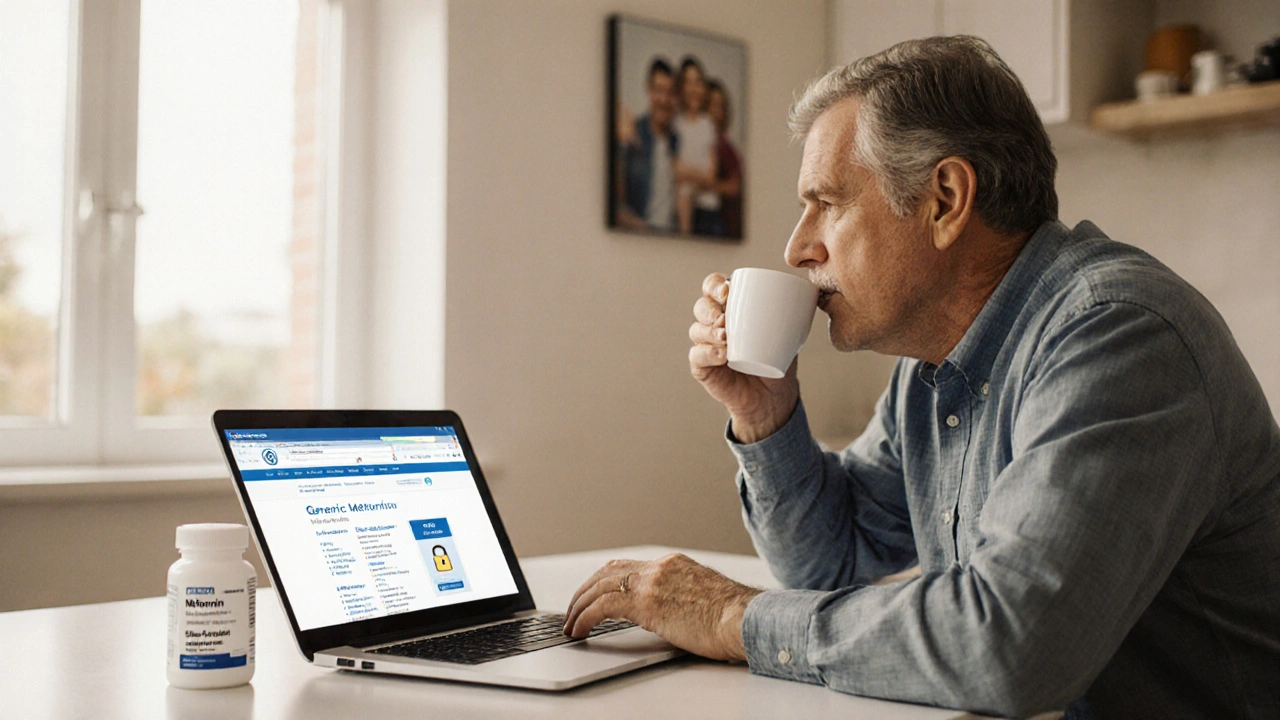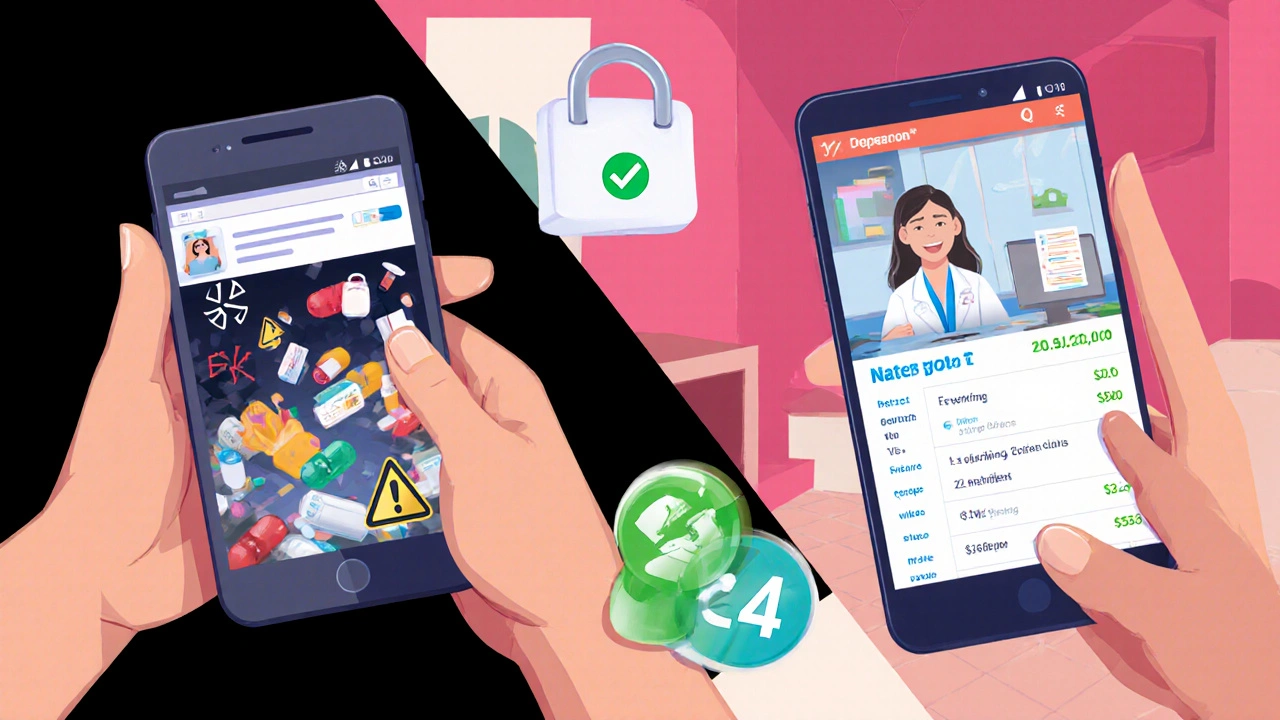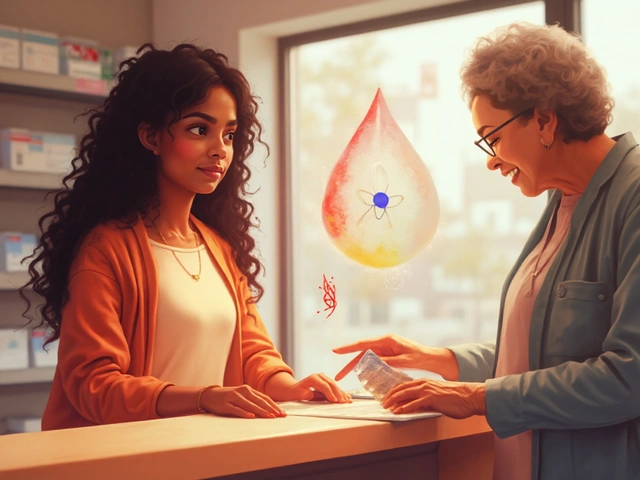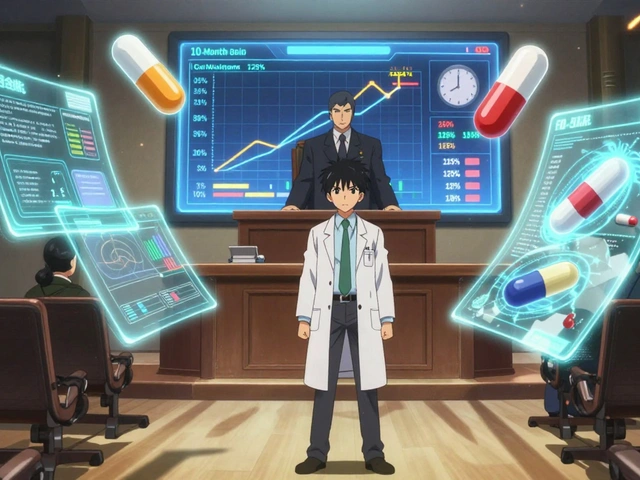
Finding a wallet‑friendly way to keep blood‑sugar levels steady can feel like hunting for a needle in a haystack. Metformin is the go‑to prescription for most people with type 2 diabetes, but the price tag on brand‑name versions can quickly add up. Luckily, you don’t have to settle for overpriced pills - a reputable online pharmacy can deliver the same medication for a fraction of the cost, as long as you know what to look for.
Key Takeaways
- Verify the pharmacy’s licensing and FDA compliance.
- When you’re hunting for generic metformin online, you’re getting the same active ingredient at 60‑80 % less cost.
- Compare price per tablet, shipping fees, and minimum order quantities.
- Use a prescription from a licensed clinician; most online sites require a digital copy.
- Check customer reviews and third‑party verification services like VIPPS or NABP.
What Is Metformin and Why It’s Prescribed?
Metformin belongs to the biguanide class of oral antihyperglycemics. It works by lowering glucose production in the liver, increasing insulin sensitivity, and slowing intestinal sugar absorption. For people with type 2 diabetes, it’s often the first medication prescribed because it reduces HbA1c levels by about 1.0‑1.5 % without causing hypoglycemia.
Studies from the UK Prospective Diabetes Study (1998) and later real‑world data show that regular use of Metformin cuts the risk of cardiovascular events and can even help with modest weight loss. That’s why doctors keep it in the front‑line toolbox.
Generic vs. Brand‑Name: What’s the Difference?
Both generic metformin and the brand‑name Glucophage contain the same 500 mg of the active ingredient. The only real variations are in inactive fillers, manufacturing source, and price.
| Attribute | Generic Metformin | Glucophage (Brand) |
|---|---|---|
| Active ingredient | Metformin hydrochloride 500 mg | Metformin hydrochloride 500 mg |
| Average cost per tablet (US$) | 0.05 | 0.30 |
| FDA approval | Approved | Approved |
| Typical dosage range | 500‑2000 mg/day | 500‑2000 mg/day |
| Formulations | Immediate‑release, extended‑release | Immediate‑release, extended‑release |
| Manufacturers | Multiple (e.g., Teva, Mylan) | Pfizer |
As the table shows, the chemical profile is identical, but the generic version saves you roughly $0.25 per tablet - that adds up to $75 a month for a typical 500 mg twice‑daily regimen.
How to Find a Safe Online Pharmacy
Online pharmacy checks several boxes:
- Licensing. Look for a state pharmacy license number on the website’s footer.
- Verification seals. VIPPS (Verified Internet Pharmacy Practice Sites) or NABP’s .Pharmacy domain are good signals.
- Prescription requirement. Legitimate sites will ask you to upload a valid prescription from a licensed clinician.
- Secure connection. URLs should start with https:// and show a padlock icon.
- Transparent pricing. No hidden fees; the total cost should be displayed before checkout.
One quick test is to type the pharmacy’s name into the FDA’s “BeSafeRx” database. If the site appears as “unlicensed” or “potentially unsafe,” walk away.

Price‑Checking Strategies to Get the Cheapest Deal
Start by gathering a baseline. As of September2025, the average retail price for a 30‑day supply of 500 mg immediate‑release Metformin (two tablets per day) is about $90 for the brand and $15 for generics.
- Use price‑comparison tools like GoodRx, Blink Health, or PharmacyChecker. Input “Metformin 500 mg” and filter for “generic”.
- Check bulk‑order discounts. Some online pharmacies drop the price to $0.04 per tablet for a 90‑day supply.
- Watch for coupon codes. A 10 % discount on a $15 order saves $1.50.
- Consider subscription services. Paying monthly can lock in a lower rate and avoid shipping surcharges.
When you add the average US shipping cost of $5 for standard delivery, a 90‑day generic package still costs under $10 total, a fraction of a single brand‑name refill.
Important Legal and Safety Considerations
The FDA does not approve individual online pharmacies, but it does regulate drug manufacturers and requires that any medication sold in the United States be FDA‑approved. Counterfeit Metformin has occasionally surfaced on unregulated overseas sites, often containing less than 50 % of the stated dose.
To protect yourself:
- Never buy from a site that offers “no prescription needed” for Metformin. It’s a prescription‑only drug.
- Check the National Drug Code (NDC) on the pill bottle. The NDC should match the code listed on the FDA’s drug database.
- Look for a clear return or refund policy in case the medication arrives damaged or expired.
Ordering and Delivery: What to Expect
Before you hit “place order,” the pharmacy will ask for a prescription verification upload. This can be a scanned copy, a photo, or an electronic prescription sent directly from your doctor’s office.
Once verified, most reputable sites ship within 1‑3 business days using discreet packaging. Tracking numbers are provided, and many pharmacies offer a “temperature‑controlled” option for medications that require it, though Metformin is stable at room temperature.
If you’re traveling abroad, confirm that the pharmacy can ship internationally and that the destination country allows import of prescription drugs for personal use.
Frequently Asked Questions
Is online generic Metformin as effective as the brand?
Yes. The generic version contains the exact same active ingredient, dosage, and formulation as the brand. Clinical studies confirm bioequivalence, meaning you’ll get the same blood‑sugar control.
Do I really need a prescription to order Metformin online?
Absolutely. Metformin is a ScheduleIII prescription drug. Sites that skip this step are likely operating illegally and may sell counterfeit medication.
How can I tell if an online pharmacy is legitimate?
Check for a state pharmacy license, VIPPS or .Pharmacy verification, https security, and a clear prescription upload requirement. A quick search on the FDA’s BeSafeRx database can confirm the pharmacy’s status.
What’s the typical cost per month for generic Metformin?
For a standard 500 mg twice‑daily regimen, a 30‑day supply of generic Metformin usually costs between $12 and $18, depending on the pharmacy and any coupons applied.
Can I get Metformin shipped internationally?
Many U.S. online pharmacies do offer international shipping, but you must confirm that your country permits personal import of prescription drugs and be prepared for customs paperwork.
Buying cheap generic Metformin online doesn’t have to be a gamble. By checking licensing, comparing prices, and verifying your prescription, you can secure a safe, affordable supply and keep your diabetes management on track.
Write a comment
Your email address will not be published.





16 Comments
Hey folks, just a quick heads‑up – always double‑check that the online pharmacy displays a valid state license number in the footer. If you see a goofy typo or missing info, it’s a red flag, especially on sites that look a bit cheap. Also, make sure the URL starts with https and has the little padlock icon, otherwise your data could be at risk. Lastly, a quick scan of the FDA BeSafeRx database can save you from a lot of hassle.
Look for the VIPPS seal and a clear prescription requirement it’s a simple way to weed out shady sites
Indeed, verifying licensing is paramount. In addition, consider checking the National Drug Code (NDC) on the bottle label; it should match the FDA’s record for the generic product. A reputable pharmacy will also provide a transparent pricing breakdown before checkout. Maintaining these safeguards ensures you receive authentic Metformin without compromising safety.
Yo, the VIPPS badge is like a gold star in the pharma world – it tells you the site meets strict US standards. Keep an eye out for any hidden fees, because some “discount” shops sneak in shipping surcharges later. When you upload your Rx, make sure it’s legible – a blurry scan can stall the whole process. And remember, DIY “no‑prescription” offers are just a recipe for counterfeit meds.
Thank you for the thorough checklist; it truly reflects best practices. I would also add that many reputable online pharmacies now offer subscription options, which can lock in lower rates and reduce repeat ordering friction. Embracing these tools not only saves money but also promotes consistent medication adherence, a key factor in long‑term diabetes management.
One must acknowledge that the discourse surrounding online pharmacies often neglects the nuanced regulatory frameworks that distinguish mere commerce from pharmaceutical stewardship. The distinction, albeit subtle, is paramount for those who value epistemic rigor over monetary convenience.
Firstly the claim that “online pharmacies are a gray area” is factually inaccurate. The FDA and state boards have clear guidelines that delineate licensure requirements. Moreover the presence of a VIPPS seal is not merely a marketing gimmick but a verifiable credential. It indicates compliance with United States drug safety standards. Additionally the National Drug Code, often abbreviated NDC, serves as a unique identifier for each medication batch. Cross‑checking the NDC against the FDA database is a simple yet effective verification step. The author’s omission of this detail is a glaring oversight. Likewise the article fails to mention the importance of a secure HTTPS connection. An insecure URL could expose personal health information to malicious actors. The recommendation to “type the pharmacy name into BeSafeRx” is sound but lacks specificity regarding the exact search parameters. Furthermore the piece does not address the potential for dosage variability in generic formulations. While the active ingredient remains identical, excipients can affect tolerability for certain patients. The writer also neglects to advise consumers on proper storage conditions for metformin, which, although stable at room temperature, can degrade under extreme heat. Lastly the discussion of international shipping omits the legal implications of importing prescription drugs. In sum the article would benefit from a more rigorous, point‑by‑point analysis of safety protocols.
Sure, because buying meds from a sketchy website always ends well.
Yo I get the vibe but fr the real deal is to stick with a legit pharmacy even if it costs a few bucks more – cheap shortcuts ain’t worth the risk.
Great breakdown! Just wanted to add that many pharmacies now provide a temperature‑controlled shipping option which can be a nice extra safety net for sensitive meds.
It’s interesting how the impulse to cut costs can sometimes blind us to the deeper ethical considerations. When we prioritize safety, we honor not only our own health but also the integrity of the pharmaceutical ecosystem.
The analysis presented underscores an essential truth: vigilance is non‑negotiable in the digital age. By intertwining regulatory literacy with practical price‑checking strategies, patients can navigate the marketplace confidently. Moreover, embracing subscription models can transform a transactional relationship into a partnership of care. As we champion affordability, we must equally champion authenticity, ensuring every tablet delivered mirrors the stringent standards set forth by the FDA. In this vein, collective consumer education becomes a powerful antidote to the proliferation of counterfeit pharmaceuticals.
Absolutely! ✅ Staying informed protects us all. 😊 Remember to verify the pharmacy’s license and check the NDC before you click “buy”. 🎉
While the checklist is thorough, one could argue that the emphasis on subscriptions may inadvertently lock patients into opaque pricing structures, reducing flexibility for those who might need to adjust dosages. Moreover, the reliance on seals like VIPPS can create a false sense of security if not cross‑checked with independent reviews.
The preceding exposition, while eloquent, conspicuously glosses over the economic incentives driving lower‑cost generics, which can occasionally compromise quality control in lesser‑scrutinized manufacturing facilities. A rigorous audit of the supply chain, beyond the superficial VIPPS seal, is indispensable for truly safe procurement.
Indeed, the hidden machinations of the pharmacy industry deserve a theatrical exposé; only by unveiling these shadowy dealings can the consumer reclaim sovereignty over their health.